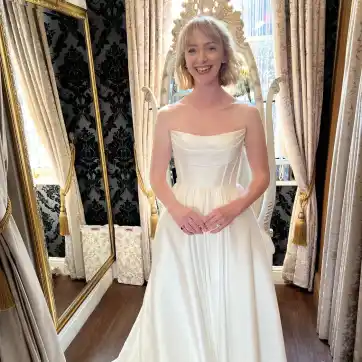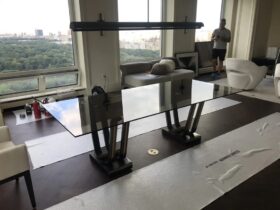Finding the perfect outfit can be a challenge, and sometimes even the most stunning pieces need adjustments to achieve the ideal fit. Clothing alterations play a crucial role in enhancing the look and comfort of your garments, whether it’s a simple hem adjustment or a complete resizing. Wedding dress alterations are especially important, ensuring that your bridal gown fits flawlessly for your big day. In this guide, we’ll explore the essentials of clothing alterations and the importance of expert tailoring for wedding dresses.
Understanding Clothing Alterations
What Are Clothing Alterations?
Clothing alterations involve making modifications to a garment to improve its fit, style, or functionality. These adjustments can range from minor fixes, like shortening sleeves, to major alterations, such as resizing a dress.
Common Types of Clothing Alterations
- Hemming – Shortening or lengthening the hem of dresses, pants, skirts, or jackets.
- Taking in or letting out seams – Adjusting the fit around the waist, hips, or bust.
- Sleeve adjustments – Shortening or lengthening sleeves for a better fit.
- Zipper and button replacements – Repairing or upgrading closures.
- Tapering – Slimming down garments for a more tailored look.
Wedding Dress Alterations: Why They Matter
The Importance of Wedding Dress Alterations
A wedding dress is often one of the most significant outfits a person will wear. Wedding dress alterations ensure that your gown fits perfectly, enhancing both comfort and confidence on your special day.
Key Wedding Dress Alterations
- Resizing – Adjusting the dress to fit your body shape perfectly.
- Hemming – Ensuring the dress length suits your height and footwear.
- Bustle Creation – Adding a bustle to lift the train for ease of movement.
- Strap and Sleeve Adjustments – Modifying the straps or sleeves for a secure fit.
- Embellishment Additions – Adding lace, beading, or other decorative elements.
How to Ensure the Best Fit
Tips for a Successful Alteration Process
- Plan Ahead – Start alterations well in advance to avoid last-minute stress.
- Choose the Right Tailor – Look for an experienced professional specializing in clothing alterations and wedding dress alterations.
- Bring the Right Accessories – Wear the undergarments and shoes you plan to use with the outfit.
- Communicate Clearly – Express your preferences and comfort needs to the tailor.
- Attend Multiple Fittings – A perfect fit often requires more than one fitting session.
Conclusion
Whether it’s a formal gown, everyday wear, or the most important dress of your life, clothing alterations can transform an outfit into a perfect fit. Wedding dress alterations are particularly essential to ensure that brides look and feel their best on their wedding day. With the right tailor and careful planning, you can achieve a flawless fit for any occasion.
FAQs
- How long do clothing alterations take?
The time required depends on the complexity of the alteration, but simple fixes may take a few days, while intricate wedding dress alterations can take weeks. - How many fittings are required for a wedding dress alteration?
Typically, two to three fittings are needed to ensure the perfect fit. - Can all dresses be altered?
Most garments can be altered, but the feasibility depends on the fabric, design, and seam allowances.
4. What should I bring to my wedding dress fitting?
Bring your bridal shoes, undergarments, and any accessories you plan to wear on the big day.





